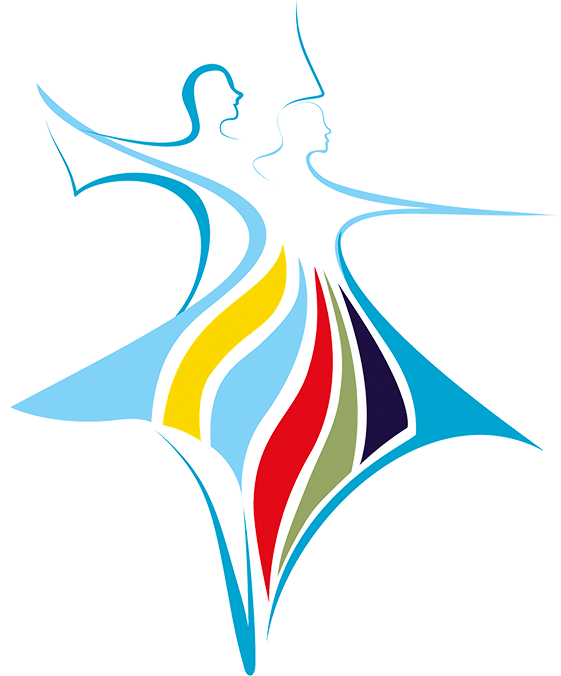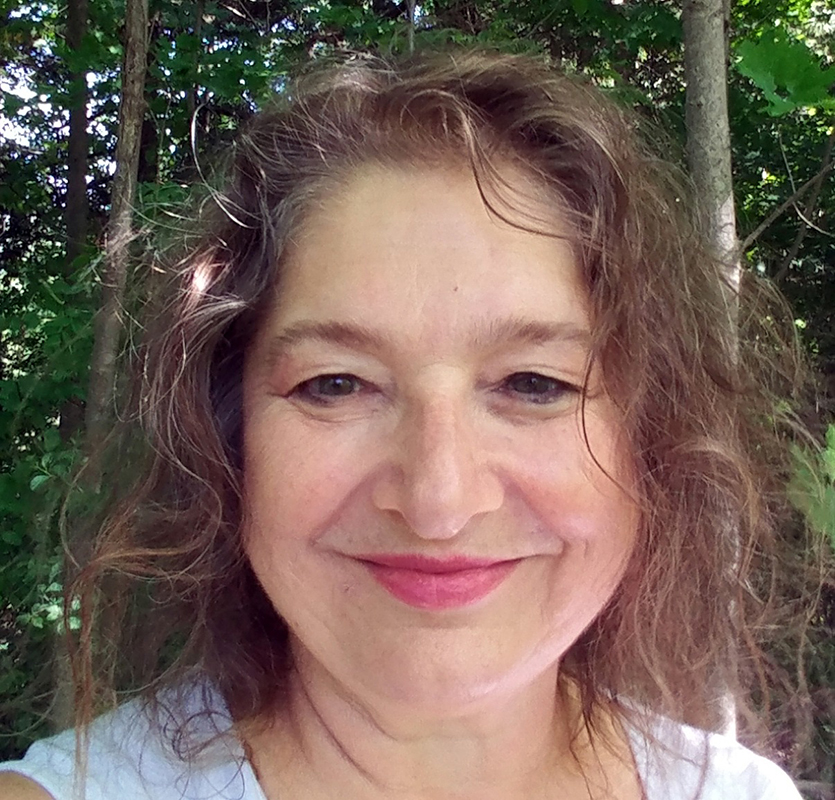- Home
- Rokdim Nirkoda 109
- Memories of Ruthy Slann z”l
A year ago, on June 5th, 2021, a bright light went out in the world of Israeli folk dancing. Ruthy Slann z”l, my best friend of over 26 years and a dynamo of dance, passed away. Desperately seeking solace during those final hours, I returned in my mind to the mountain lake and cedar-scented cabins of Blue Star [camp in North Carolina, USA] where I first met her. A true dance gypsy and fixture at Israeli dance camps around the world, Ruthy co-directed the Fred Berk Israeli Folk Dance Camp at Blue Star for many years. Unable to prevent it from folding in 1996, she determined to keep its spirit alive by founding her own camp, which she eventually named, Karmiel USA. Ruthy was also the driving force behind the Karmiel Summer Course for Foreign Teachers and Dancers of Israeli Folk Dance, enlisting participants wherever she went, taking care of the smallest details, and ensuring that the graduates were happy enough to become ambassadors themselves and to help recruit the next cohort of trainees.
Ruthy’s final wish was for Karmiel USA to continue. With North Carolina, where we hold camp, red with Covid, our 26th year was a challenge. In 2020, Ruthy had helped us run a virtual/hybrid mini-camp for the first time. In 2021, we resolved to do something longer – 16 hours long to be precise.
The first night was a special tribute to our beloved friend and camp director. We screened the moving commemorative video created by Meliss Jakubovic and danced some of Ruthy’s favorite dances. We began with a few dances that expressed our anguish at losing her, and that, hopefully, provided some cathartic ‘dance therapy’. Ruthy loved the lyrics of dance songs almost as much as the dances themselves and often sang herself hoarse during dance camps.
On one occasion, she was dismayed that the version of a dance included on our camp CD – Tuvia Tishler’s Zichronot – was instrumental rather than vocal. Seeking to rectify this mistake some 24 years later, I contacted Ken Avner, who was kind enough to send me the vocal version. As I listened to the words, I understood why Ruthy felt so strongly about them. They speak of happy memories – of the green hills of Eretz Yisrael – the land of Israel, the sound of voices and songs, and ‘the dance that never falls silent’. These last words are repeated twice at the end of the song and were, I realized, the perfect motif, not just for the evening, but for the camp itself.
As MC for the night, I had been at a loss for words to adequately express the emotions churning inside me. In a flash, I realized that it had all already been said, in the songs Ruthy loved so deeply. Joanna Blackwelder and I compiled a booklet of lyrics, so that everyone participating could fully appreciate their significance. On the cover, I put the design I had created to represent the way we are all connected through our love for Ruthy and the healing of our broken hearts through dance. And, since we were on a virtual platform, I assembled photographs I had taken over the years into a slide show to complement the lyrics and dance program.
We began by dancing Shma Elohai, praying with our feet for healing from the heart-rending pain of losing Ruthy. Heye Chazak was Ruthy’s mantra. In my darkest moments, she would always admonish me not to fall apart. The lyrics describe her indomitable spirit perfectly.
Mei Nahar, which she taught at our last in-person camp in 2019, describes her unquenchable thirst for life. She loved Bevo Yomi and Chafetz Chayim because they expressed her longing for more time – and more dancing.
One of Ruthy’s absolute favorites was Halevai. No matter how tired she felt during a Zoom dance session, she had to get up for that dance. Ruthy was the most tender-hearted person I have ever known, and the lyrics of Halevai express her deepest hopes and wishes – for tolerance, peace, compassion, love, and an end to suffering.
With Or Shivat Ha’Yamim, a memorial candle, and a picture of her last birthday cake, we celebrated Ruthy’s brilliant 75 years and the community she created. We prayed for the strength to accept our loss as we danced Matanot Ktanot and made wishes for her as we danced Ichulim. Todah Le’Olam voiced our immense gratitude for Ruthy: “Thanks for the joy. Thank God for sending you to me. Thanks for the time spent with you. There is no one else in the world like you. You are precious”.
Ruthy was not just a dance leader; she was also a refuge for anyone in need of comfort. Like Hamakom Sheli says, she opened the door for people to say what was in their hearts, always focusing on the good and encouraging them to do the same.
Hachnisini Tachat Knafech is very personal for me because it has always represented Ruthy, who took me under her wing from the first moment I met her, all those years ago. I was overwhelmed when her daughter, Liat, sent me a small wooden plaque of a dancer with wings, which had been gifted to Ruthy on her last trip to Israel; it is a perfect visual representation of the dance.
Hachnisini Tachat Knafech also brings to mind a soft sculpture, created by one of our dancers – dollmaker, Betsy Dunkle, which depicts angels dancing around the Earth. Ruthy’s circle of friends is truly a dance circle that spans the globe. She loved people, and she brought them together, connecting them to each other, to Israeli dance and to Israel itself. So many of us wouldn’t even have known each other without her.
Ruthy was all the friends that Chaverim describes rolled into one person. She taught us how to sing, to be happy, to take time out, to forget and forgive instead of hiding inside ourselves, and she always knew how to bring a smile to our faces. Omrim Yeshna Eretz, one of Ruthy’s favorite dances since childhood, details her arduous last journey back to Israel past ‘deserts and oceans’, with her ‘strength ending’.
Tzion Tamati, which she adored, describes her yearning for her homeland and her determination not to forget its beauty before ‘the pit of my grave closes its mouth on me.’ ‘Zion, you will mark my grave,’ the song says. Liat put our camp logo (a Magen David formed from two dancers) on Ruthy’s headstone along with the words: “I’d rather be dancing!” Nothing could be more appropriate. On that note, we danced He Rak Rotza Lirkod, because, as the words explain: ‘We only live once. She has discovered the secret…she just wants to dance, and there is no stopping her!’
These are the two inextricably related, overriding themes of Ruthy’s life: her love for Israel and her love for dance. Ruthy spent decades introducing the beauties of Israel and the joy of dance to people from around the world, leading dance tours through the width and breadth of the country together with her tour-guide sister, Ronit Mandel Shaked. Participants would spend blissful days sightseeing, while Ronit filled them in on the incredible culture and history of Israel, and nights of dancing their feet off at local harkadot (dance sessions). I vividly remember learning Artzi shortly before my first such tour of Israel, in a paroxysm of anticipation and disbelief that I was going to be dancing on the land that this dance celebrated.
What better way to honor that part of Ruthy’s legacy than with a virtual dance tour of Israel?! After months of lockdown for so many of us, I wanted to give participants the feeling of travelling, albeit virtually. I wanted us to admire, once again, the places these dances are dedicated to, and I wanted to situate the dances in their historical, cultural, and geographical context – the land in which they are rooted.
When I toured Israel with Ruthy, we danced wherever we went – beginning the moment we spontaneously started singing and dancing Lo Ahavti Dai on the tarmac next to the plane, to the bemusement of the airport personnel. We danced Kineret on a boat on Lake Kineret, and Yam Hamelach on the shore of the Dead Sea, in our bathing suits covered with mud.
With the help of the photo albums I had created for Ruthy over the years, I organized these pictures from north to south, along with a rudimentary ‘dance map’. We followed the photo of the hairpin turns on the roads of the Golan with the twisting steps of Sham Harei Golan, and the tragic story of Gamla with Moshiko’s compelling voice and choreography.
Alternating dances and images, we danced our way south with Or Ve’Yerushalayim and Tzel Midbar. While traversing Israel, we simultaneously jumped back and forth between Canada and the United States as we had done during the tribute session – from Joanna Blackwelder in Vancouver, British Columbia, to me in Toronto, Ontario, and the rest of the team in Charlotte, North Carolina: Joseph Simpkins, Sarah Lamb, Debbie Bateman, and Rebekah Constantin, all taking turns leading dances, many of which we had always relied on Ruthy to lead. Juggling PowerPoint slides, music and locations was challenging, but we managed without the virtual bus breaking down, and ended our tour in Eilat to accolades from our fellow-travelers.
As Sarah so aptly put it, for someone with such small feet, Ruthy sure left some pretty big shoes to fill. Nevertheless, at that moment, we knew she would have been smiling, applauding, and dancing for joy!
Ruthy’s lifelong mission was to bring new dancers into the circle. Meliss Jakubovic has set up a scholarship fund in her name to help dancers come to camp which, this year, we plan to hold in person. (See details at: https://www.karmielusa.com/) You can donate to keep Ruthy’s dream alive and watch a video commemorating her amazing spirit at: https://www.lirkodforever.org/memorial.









Comments
התראות